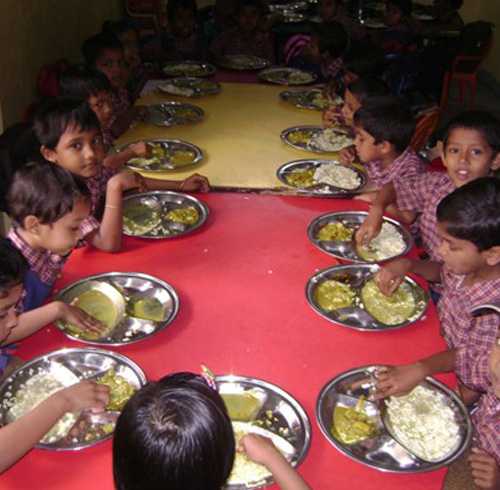In recent years, we have witnessed a peculiar and persistent conflict—between development and environmental conservation. On one hand, development demands infrastructure—roads, factories, electricity, housing, and amenities—all of which rely on natural resources like minerals, water, forests, and land. Unsurprisingly, their extraction leads to pollution, shrinking rivers, deforestation, and a polluted ecosystem. On the other hand, when we move towards environmental conservation, it often seems that the pace of development begins to slow down — as if there exists a natural conflict between the two.
We find ourselves caught in a kind of a moral dilemma, where every choice comes at a cost. Prioritizing development often comes at the expense of nature, while prioritizing conservation can hinder economic progress and the fulfilment of basic human needs.
The Environmental Crisis
Climate change and global warming are no longer distant warnings—they are lived realities. Nature is weary: our water bodies are drying up, air is becoming unbreathable, and forests are vanishing. From the Earth’s womb, we are relentlessly extracting oil, water, coal, minerals, and metals—so much so that the womb of mother earth is hollowing out.
In major cities like Delhi, Kolkata, and Mumbai, the air quality index regularly exceeds 300—a level considered hazardous. Our sacred rivers, once lifelines of civilization, now flow feebly, if at all. In many places, river flows have reduced by over 50%. According to a recent NITI Aayog report, if current trends continue and no drastic action is taken, nearly 40% of India’s population may lack access to potable water by the year 2030.
Development and Economic Prosperity
Yes, the environment faces grave challenges—but we must also recognize that millions of people around the world still struggle to meet their most basic needs. Can we expect someone who doesn’t have two meals a day to understand and act upon ideas like “sustainable development” or “carbon footprint”?
Once a society meets its fundamental needs, it naturally aspires for a better life. This desire is neither surprising nor wrong. A person who owns a bicycle may dream of a motorcycle, the motorcyclist of a car, the car-owner of an airplane. Similarly, someone in a kutcha house may long for a pucca house, and those in pucca houses may envision bungalows. This is the nature of human aspiration—to seek comfort and progress.
But the question is not whether these desires are valid—the real question is: Can nature support them all? Are Earth’s land, water, air, minerals, and energy sufficient and everlasting to fulfil the growing aspirations of every individual?
The Need for a Balanced Vision
This is where we need a holistic vision—one that upholds both environmental sustainability and human development. If natural resources are used judiciously, equitably, and with shared responsibility, we can protect the environment and address deep-rooted issues like poverty, inequality and the very basic nature of the human i.e. growth.
Bhartiya Model of Integrated Development
The Western worldview treated nature as a commodity—something to be exploited for pleasure and profit. Unfortunately, post-independence, India too began following the same model, and we now face its consequences. The belief that “everything on Earth exists for my consumption” is not progress—it is a dangerous illusion.
Resources are finite, but human desires can be infinite. As Mahatma Gandhi wisely said,
“Nature has sufficient to fulfil everyone’s need, but not to fulfil anyone’s greed.” In Indian philosophy, there is no division between human and nature. Nature is not just an external reality—it is an extension of our inner being. When we call Earth “Mother,” it is not a poetic metaphor, but a deep experiential truth—she nourishes, shelters, and sustains us. Caring for the environment does not mean halting development; it means choosing a form of development that walks hand-in-hand with nature.
Incorporating principles like refuse, reduce, reuse, recycle, and embracing a zero-waste lifestyle is not just ethical—it is essential. Energy use must be mindful; water and electricity must be conserved. Simplicity is not a regression—it is an elevation of thought.
Our Living Legacy of Eco-Consciousness
India’s socio-political journey over the last five centuries has shaken its cultural consciousness. Colonialism, invasions, and blind imitation of the western models has challenged our values. Yet, the soul of India—its compassion toward living beings, its reverence for nature—remains intact. These are not just ancient stories, but living truths that still breathe through our festivals, customs, and everyday life.
Time and again, Indian philosophy reminds us that human is not separate from creation—he is but a thread in the same cosmic fabric. India’s cultural tradition is not frozen in scriptures—it evolves through its people. Take, for instance, Amrita Devi Bishnoi, who along with 363 of her fellow villagers, sacrificed their lives to protect Khejri trees. Or Daripalli Ramaiah of Telangana, who travelled with seeds and saplings on his bicycle and planted over a million trees single-handedly. Padma Shri awardee Jamuna Tudu of Odisha bravely fought forest mafias and inspired hundreds of women to become protectors of their forests. Likewise, Tulsi Gowda, a tribal woman with no formal education, came to be known as the “Encyclopedia of Forests” for her profound knowledge of plant species and their care. These are a few examples out of many others. It is the testimony that India’s environmental conscience is deeply rooted in its people.
A Timely Reminder
On this Environment Day, it is worth contemplating: Nature can flourish without us, but we cannot survive without nature. Let us not forget that if we continue to exploit nature, and if—out of balance—it begins to respond with equal intensity, the outcomes will be beyond our control. Just as humans are breaking their natural boundaries, if animals and ecosystems were to do the same, the consequences would be devastating.
The path ahead lies not in choosing between environment and development, but in realigning development with the deeper rhythms of nature. Only then can we ensure a future that is just, joyful, and sustainable for all.


